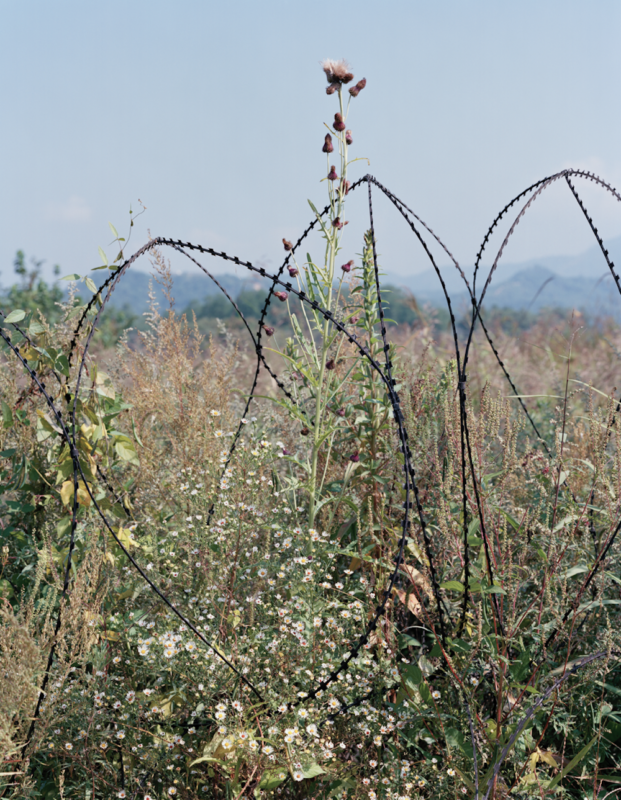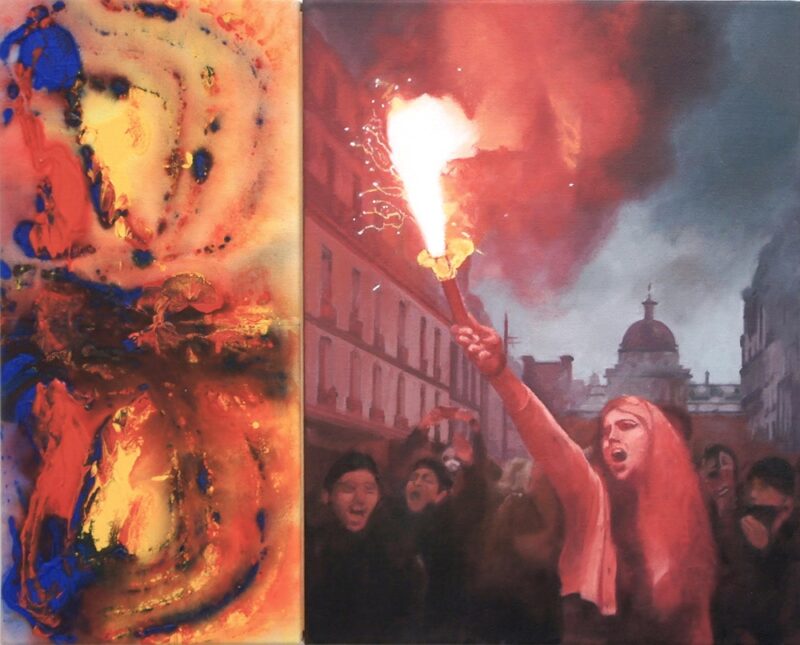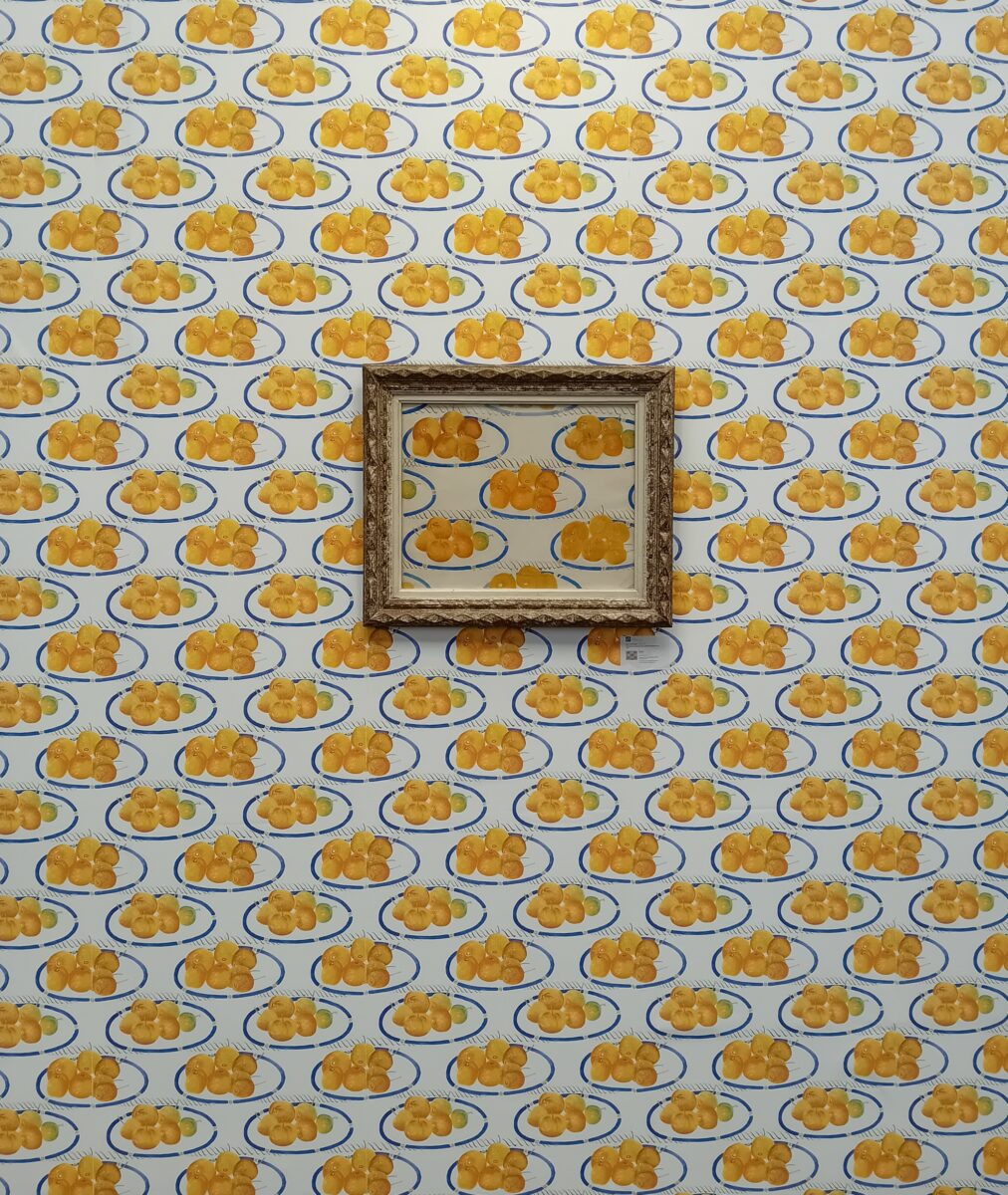
London Art Fair special: I guess everyone knows that the standard of the London Art Fair is – to put it kindly – mixed, a tendency exacerbated in recent years by the decline in overall quality of the ‘Encounters’ and ‘Photo50’ sections. Nonetheless, there’s plenty worth seeing. Here are a few things to look out for:
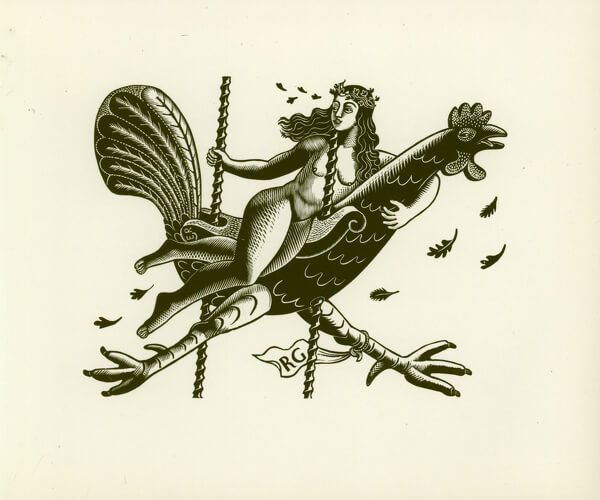
Not only do Liss Llewellyn show Ravilious’ unrealised plan for a fruity wallpaper, they present it on the backdrop of the wall paper as made for the occasion. And they complemented it with a small but flamboyant woodcut showing Ravilious’ wife on a merry-go-round cockerel. It was made to head up the Golden Cockerel Press Autumn List, its owner having requested ‘a robust animal with a naughty twinkle in its eye and a comb suggesting a drunken coronet’.
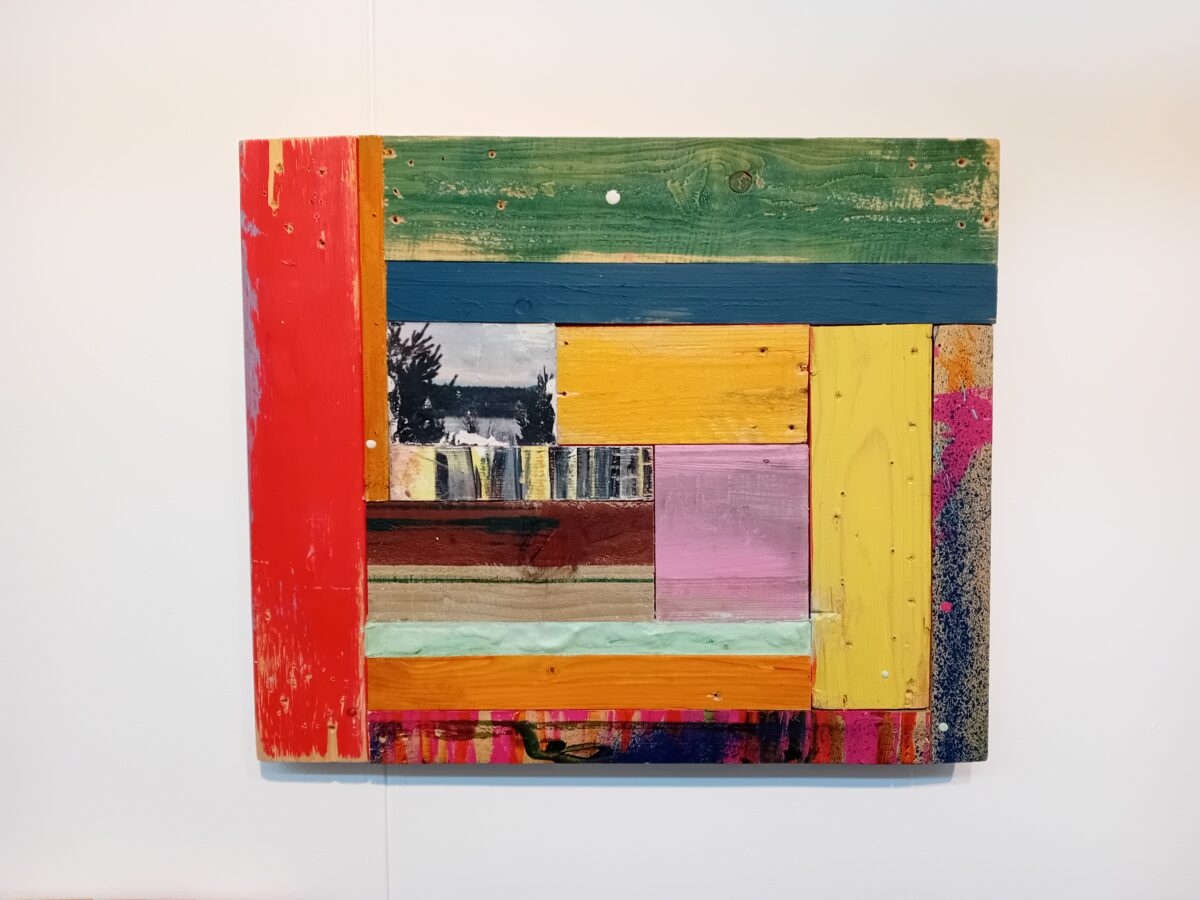
The best stand combines Alice Wilson with Aliki Braine. The former’s ‘Barrier Systems’ of timber, photo transfers and paint position yet obstruct the viewing experience to intoxicating effect. The latter’s ‘Into the Woods’ enact the planting and felling of man-made woods by cutting source negatives into strips, while her ‘Borrowed Landscapes’ frame views in the windows taken from 15-16th century paintings.
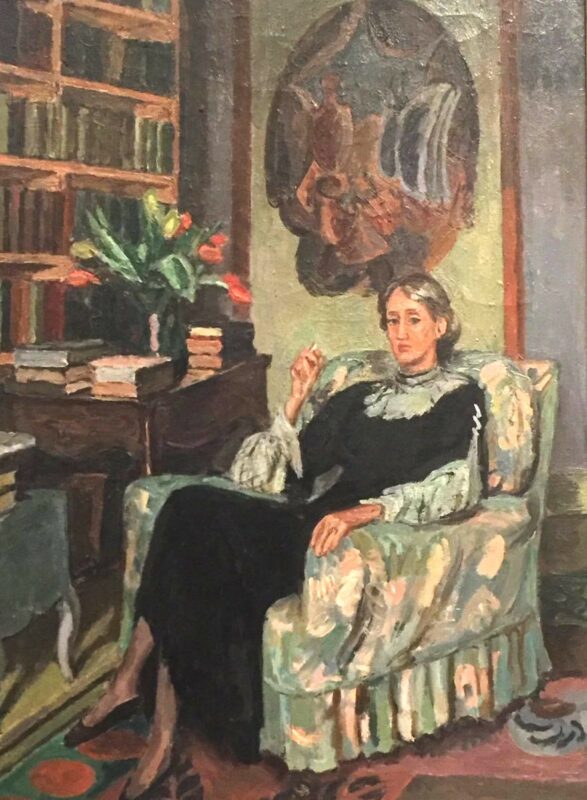
The Fair’s institutional partner this year is the home of Vanessa Bell and Duncan Grant, and the stand-out work on their stand is the former’s portrait of her sister in the Bloomsbury apartment she shared with Leonard from 1924-39. Woolf hated to pose, even for Bell, and complained about it regularly in her diary entries from 1932-4.
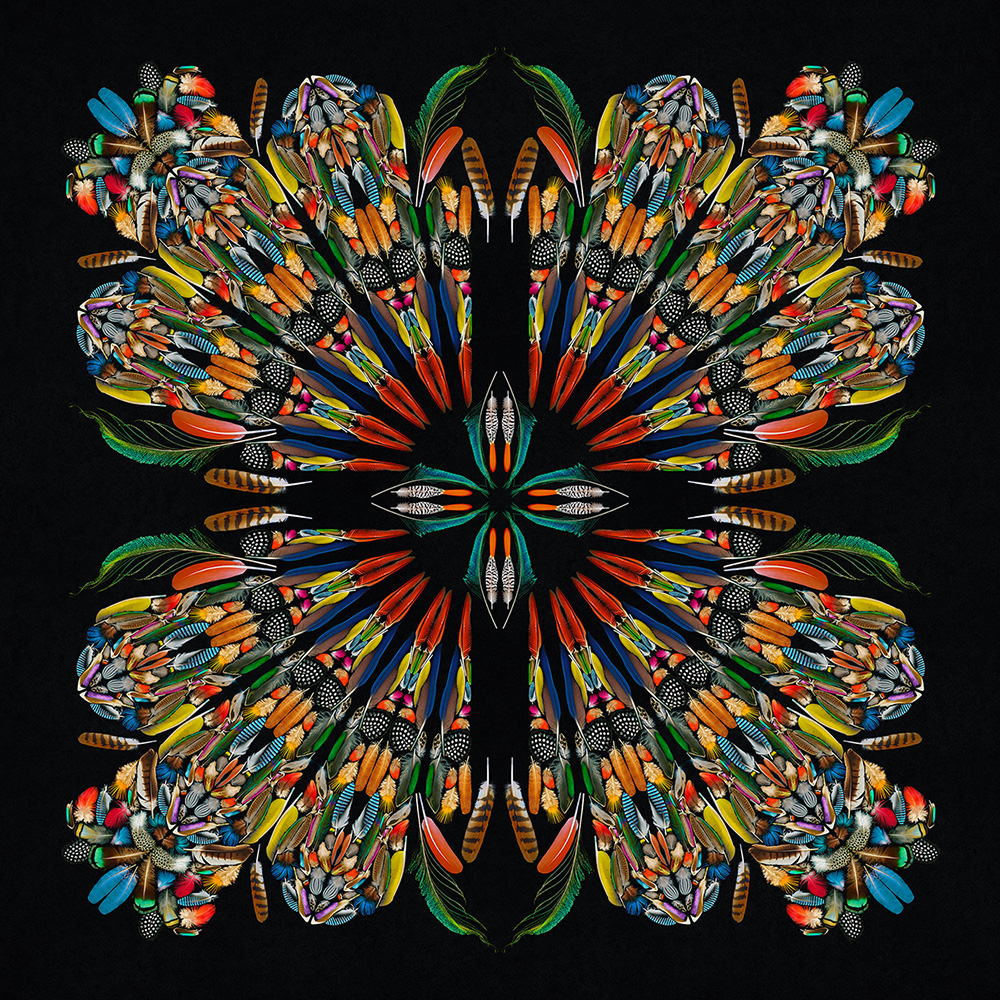
A room of editions proved a worthwhile addition. MMX’s stimulating photographic mix included this arrangement of naturally shed and coloured feathers, suggesting the spiritual and cultural meanings of their use in many cultures, but from an abstract perspective.
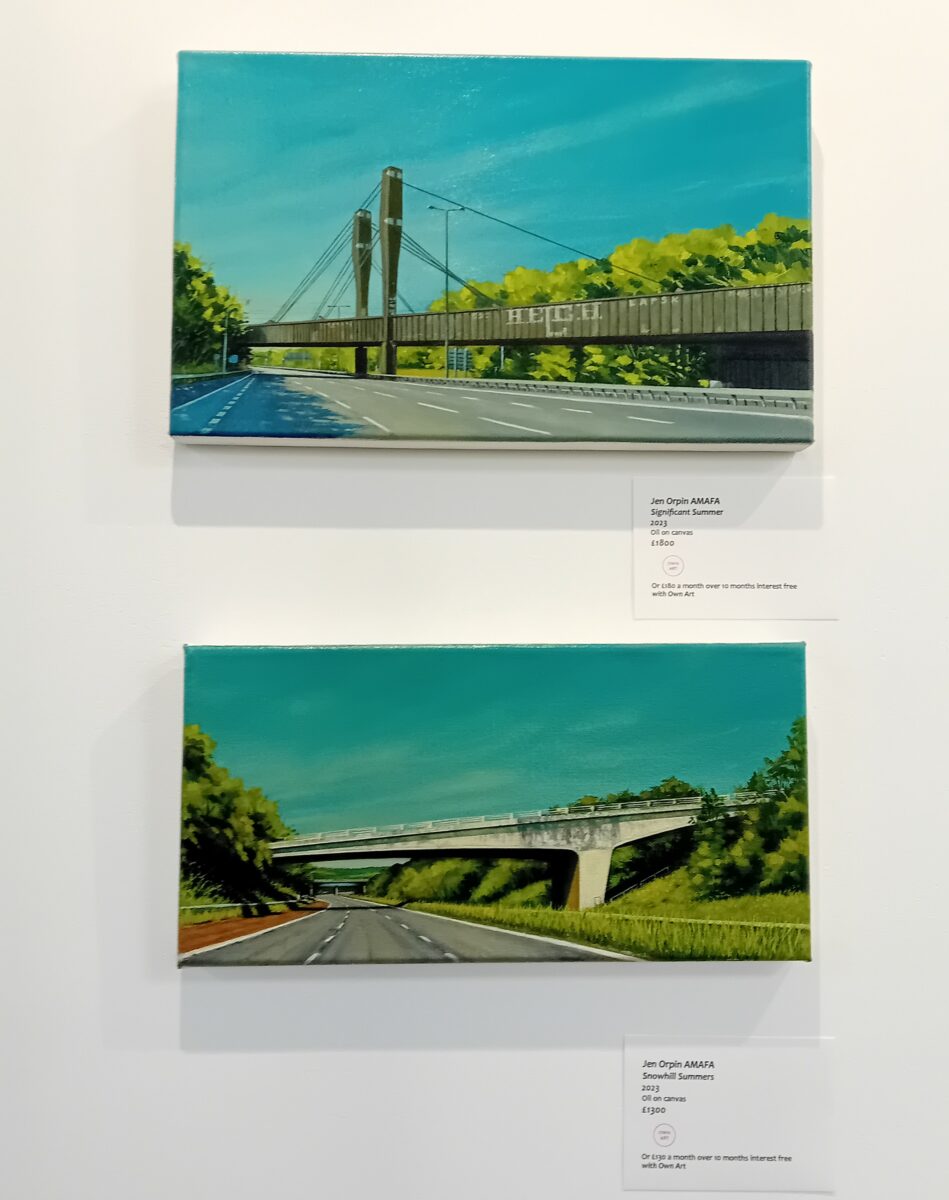
Saul Hay’s excellent gathering of five artists inspired by brutalist architecture includes several of Jen Orpin’s paintings of motorway bridges, evoking the connectivity and emotions of the car journey through a little-considered feature of the travelscape.
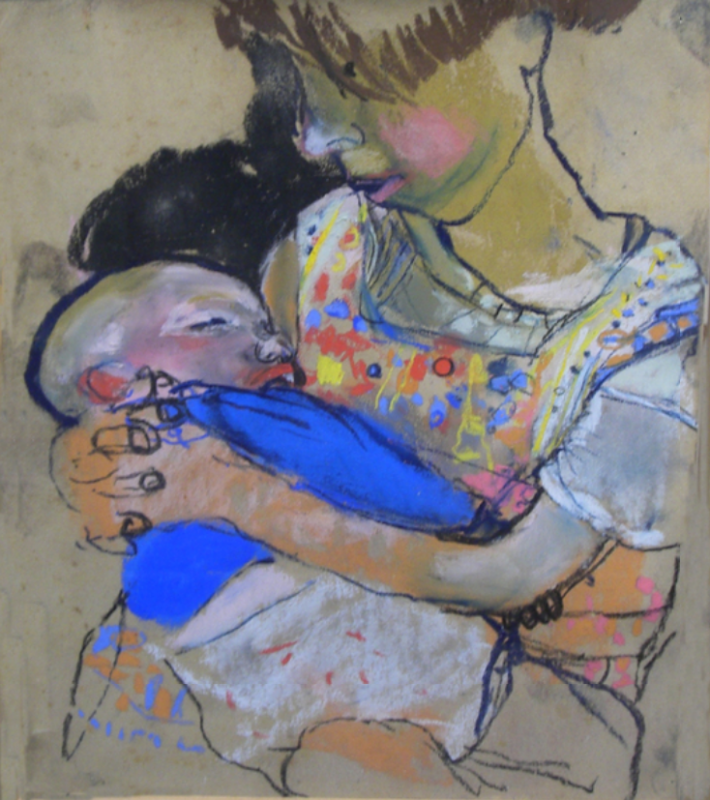
Eardley (1921-1963) made pastels of the local children she came to know in the poor tenement area of Glasgow (as well as landscapes made at the fishing village of Catterline, where she had a second studio from 1954). This girl holding one of her younger siblings is typical of her unsentimental way of capturing their vitality.
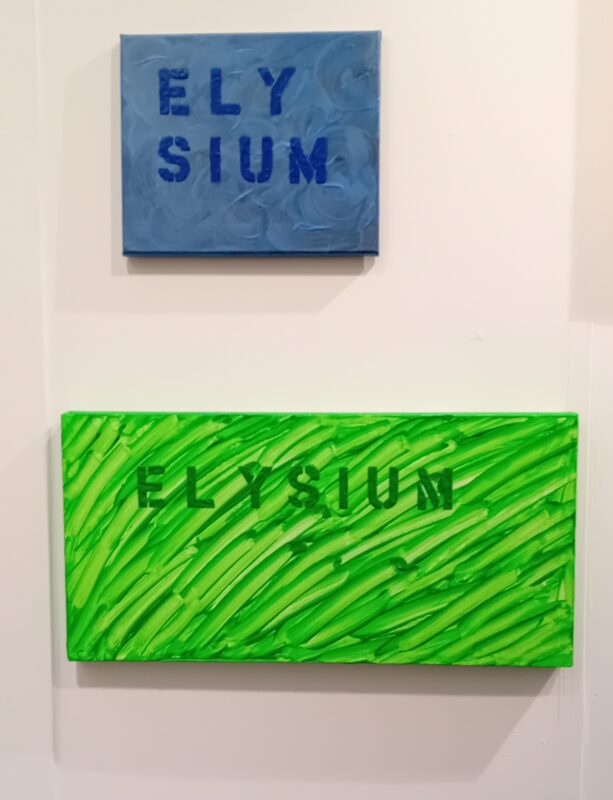
Petry’s colourfield text paintings compare the conceptions of heaven across different cultures through appropriate mark-making and colour choices, such as Hindu (Vaikuntha), Islamic (Firdaus), Buddhist (Nirvana) philosophy (Chinese). Here the Ancient Greek Elysium is evoked through swirling blue skies and wind-ruffled grass, in line with Plutarch‘s description of the afterlife isles as enjoying ‘moderate rains at long intervals, and winds which for the most part are soft, and precipitate dews’.
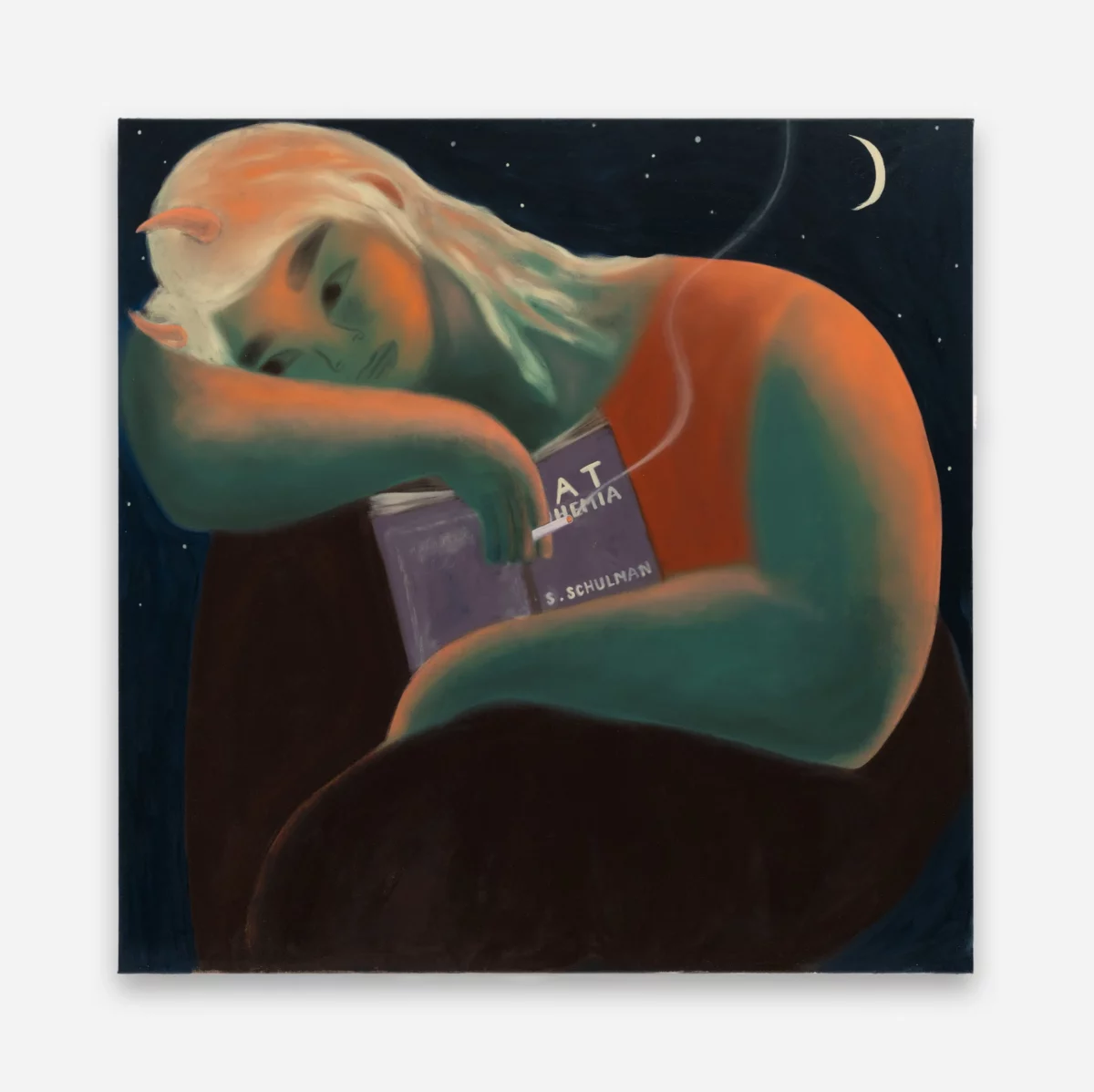
This year’s ‘Platform’ section sees eight galleries bring a lively focus to queer love and life. The lightly-horned figure in this atmospheric painting holds Sarah Schulman’s novel Rat Bohemia, in which, explains Sophie Vallance Cantor, ‘the characters exist on the fringes of New York city in the 1990s, navigating abandonment, grief and poverty’. She wanted to suggest ‘sitting with hard feelings but also a sense of coming back to yourself and what’s important’.
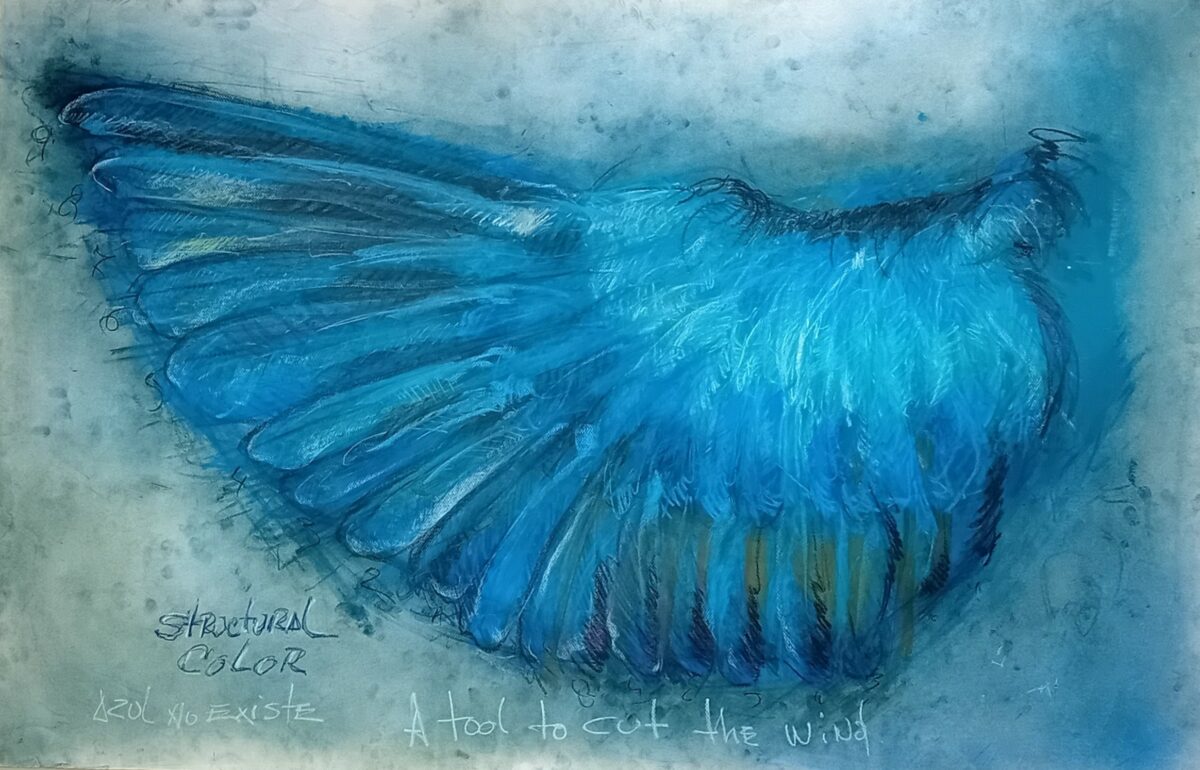
The Deptford gallery has the biggest stand. Their eight artist presentation includes large drawings by Oswaldo Maciá, a Columbian who works with the relations of human to nature, often using sound and smell as sources. His latest series features wings – nicely classified as ‘tools to cut the wind’ – which have something of the hand about them as well exhibiting ‘structural colour’.

